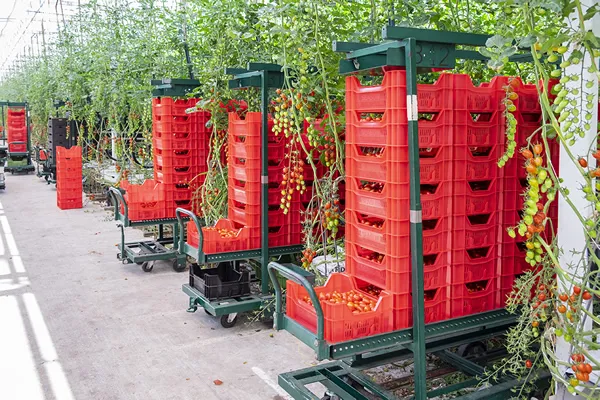We are increasingly seeing rigid crates being exchanged for folding crates in the fruit and vegetable sector. Schiphorst Transport and Storage Technology, a producer of plastic crates, also signals a significant increase in the sale of folding crates. Will the rigid crate disappear completely from view?

Folding crate versus rigid crate
The folding crate has been around for 25 years now. The first generation of folding crates yielded a volume saving of up to 75%. Thanks to innovations in design and new production techniques, a folding crate offers a volume saving of 84% in 2021. While it was already attractive to use folding crates for return transport, now this advantage has only increased. The ease of use of this type of crate has also increased, because the crates are easier to fold and unfold thanks to various innovations.
Nevertheless, there are still business situations where it is possible to work more efficiently with rigid crates than with folding crates. Internal processes and harvesting systems in particular are designed for working with rigid crates, where the need to fold and unfold crates is experienced as a hindrance. In terms of lifespan and durability, both types of crates are fairly equal to one another. The reusable packaging will last for years and are both 100% recyclable. At most it can be said that folding crates are more likely to suffer from improper use. When a crate is not fully unfolded and is subsequently stacked upon, the crate will deform. On the other hand, the better type of folding crate is equipped with a user-friendly and efficiently functioning lift / lock system, which results in a very low susceptibility to errors when folding out and clicking into place.
Who is the winner?
Which is better, a folding crate or a rigid crate? Hans van Noesel, Sales Manager Benelux at Schiphorst Transport and Storage Technology, confirms that both rigid and folding crates have their advantages and disadvantages. “You can load a rigid crate immediately, but it requires more space during return transport and storage. This is cheaper with a folding crate, but they have to be folded in and out. If you do a lot of actions per day, it can make a big difference. There is no right or wrong. ”
So many different business processes are used within the fruit and vegetable sector that it is necessary to consider for each individual situation which type of crate will benefit the user the most. This is a consideration of, among other things, the efficiency in the internal work process, the number of rotations in return transport and the resulting increase in sustainability.
“Companies that are about to switch to new packaging would be wise to seek advice from an expert and to test different types of crates within their own business processes,” Hans advises. “At Schiphorst we notice that the role of advisor is key to selling plastic crates. It is the strength of our organisation that we think along with customers about logistics solutions in plastics.”
For more information:
Vincent Wesseldijk
Schiphorst 
+31(0)570 622944
[email protected]
www.schiphorstbv.nl
